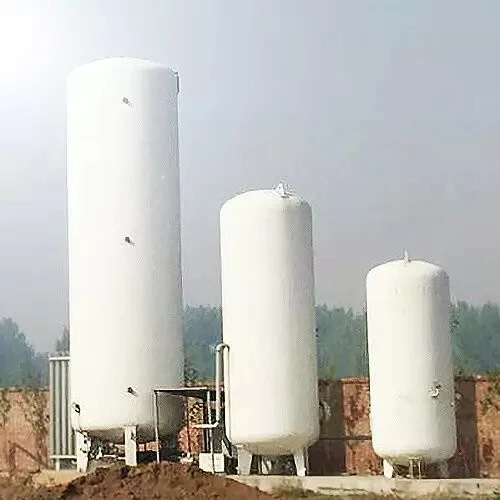Steel storage tanks, crucial for storing liquids or gases, are indispensable across industries like petroleum, chemical, metallurgy, grain, oil, food, and transportation, contributing significantly to the national economy. Many enterprises rely on these storage tanks for normal product manufacturing. In China, oil storage primarily utilizes above-ground metal tanks. This article explores key aspects of vaulted storage tanks, internal floating roof tanks, and horizontal storage tanks commonly used in the country.

Storage tanks exhibit diverse forms based on various factors related to their usage and contents. These classifications include:
- Classified by Location: Above-ground storage tanks, underground storage tanks, semi-underground storage tanks, offshore storage tanks, subsea storage tanks;
- By Oil Types: Crude oil storage tanks, fuel storage tanks, lubricating oil storage tanks, edible oil storage tanks;
- By Use: Storage tanks for production, storage tanks for storing;
- By Layout Form: Vertical storage tanks, horizontal storage tanks;
- By Size: Large storage tanks (above 100m3, primarily vertical), small storage tanks (equal to or less than 100m3, predominantly horizontal)
Various international standards govern the construction of storage tanks to ensure safety and reliability. These include the American Petroleum Institute API Standard 650, British Standard BS 2654, Japanese Standard JISB 8501, German National Standard DIN 4119, Chinese Petroleum Industry Standard SYJ 1016-82, and Petrochemical Industry Standard SH 3046-92.
Storage tank materials are categorized into tank materials and auxiliary facility materials. Tank materials are further classified into low-strength steel and high-strength steel, the latter being predominantly utilized for tanks exceeding 5000m3 based on tensile yield strength. Auxiliary facilities, such as wind-resistant circle beams and guardrails, are crafted from normal carbon structural steel with low strength. The selection of materials for other accessories is contingent on their specific purposes.
Configuration of Storage Tanks
In China, the prevalent types of storage tanks include vault storage tanks, floating roof storage tanks, and horizontal storage tanks, all of which boast mature production and installation techniques.
Vault storage tanks feature a steel container with a spherical roof and a cylindrical body. This cost-effective and easily manufacturable tank is widely used across various industries. The tank's bottom is assembled using steel plates, with the center plate in the middle and bar-shaped or bow-shaped plates at the edges. Typically, bar-shaped plates are recommended for tanks with an inner diameter shorter than 16.5m, while bow-shaped plates are preferred for tanks with a diameter equal to or longer than 16.5m. The tank's wall, made of welded steel plates, can be categorized into sleeve type and linear type.
2. Floating Roof Storage Tanks Structure
Floating roof storage tanks consist of a floating roof that rises and falls with changes in the medium's storage, along with a vertical cylindrical tank. A ring seal is present between the outer edge of the floating roof and the tank wall. The floating roof's large volume necessitates a bottom plate made of a bow-shaped plate. For the linear tank wall butt weld of the floating roof storage tank, polishing is essential to ensure a smooth and flat inner surface. The top of the floating roof remains unenclosed, and to enhance wall rigidity, a windshield ring beam and reinforcement ring are added based on wind load considerations.
The floating roof comes in various types, including single disc floating roof, double disc floating roof, and float-type roof. The single disc roof is a ring-shaped float composed of independent cabins with a single-plate inner side. It is reinforced at the bottom by multiple round steel rims, making it a cost-effective and easy-to-maintain option. The double disc floating roof comprises upper, lower, and edge plates, offering advantages such as easy floating and effective drainage.
3. Internal Floating Roof Tanks Structure
Designed to minimize medium volatilization loss and prevent external contaminants like rain, snow, and dust, internal floating roof tanks are commonly used for storing light oils such as gasoline and aviation kerosene. The tank adopts a linear butt-welded wall, and in China, two common structures for the floating roof are steel floating roofs (similar to floating roof storage tanks) and assembled aluminum alloy floating roofs.
4. Horizontal Tanks Structure
Typically utilized in production or gas stations, horizontal tanks have a volume generally less than 100m3. The ring plates are arranged alternately, forming end caps that can be flat or disc-shaped with the same diameter. Tanks with flat end caps can withstand 40 kPa of internal pressure, while those with disc end caps can endure 0.2 Mpa of internal pressure.

